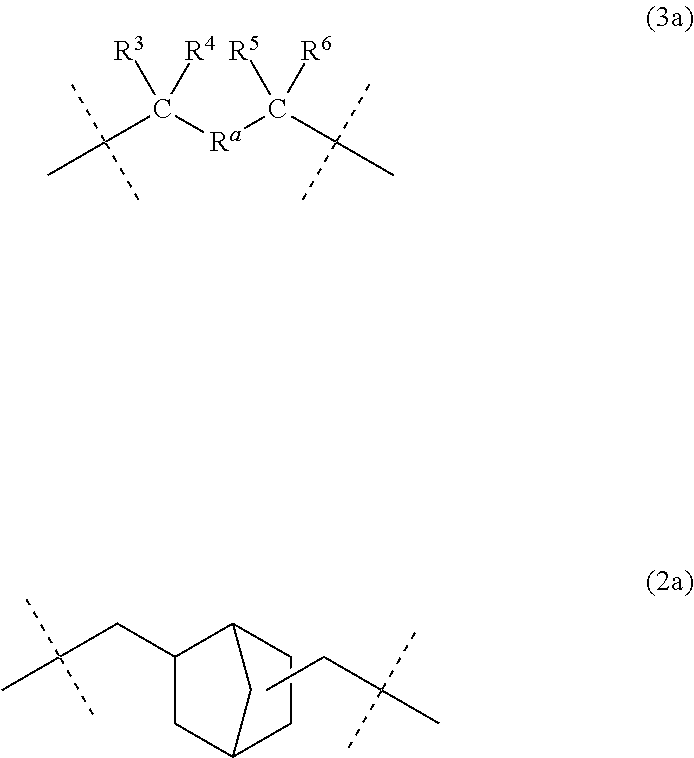Dental polymerizable monomers, compositions, adhesive dental materials and kits
a technology of dental materials and polymerization, applied in the field of dental polymerizable monomers, dental compositions, dental adhesive curable compositions, mobile tooth fixing materials, etc., can solve the problems of poor strength obstructing the application of resins to sites subjected to high stress, insufficient mechanical properties of cured composite resins, and inability to achieve satisfactory levels of this important performance. , to achieve the effect of high bonding performance, high elastic modulus and high strength
- Summary
- Abstract
- Description
- Claims
- Application Information
AI Technical Summary
Benefits of technology
Problems solved by technology
Method used
Image
Examples
production example 1a
[0700]A thoroughly dried container equipped with a stirring blade and a thermometer was loaded with 557.3 parts by weight of HEMA, 1.0 part by weight of DBTDL and 0.5 parts by weight of BHT. The mixture was heated to 60° C. and was stirred to uniformity. Subsequently, 441.6 parts by weight of NBDI was added dropwise while controlling the inside temperature to not more than 90° C. After the whole amount of NBDI had been added dropwise, the reaction was performed for 7 hours while keeping the reaction temperature at 85° C. Consequently, 1000.0 parts by weight of the target urethane methacrylate illustrated below was obtained. During this process, the progress of the reaction was tracked by HPLC analysis to determine the end point of the reaction. The number of moles of HEMA was twice the number of moles of NBDI, and the ratio of the hydroxyl groups in HEMA to the isocyanate groups in NBDI was 1:1. The viscosity of the urethane methacrylate at 65° C. was 750 mPa·s.
production examples 2a to 4a
[0701]Urethane (meth)acrylates were obtained by the same synthetic procedures as in Production Example 1a while using the hydroxy (meth)acrylates and the diisocyanates illustrated in Table 1a below. The number of moles of the hydroxy (meth)acrylate was twice the number of moles of the diisocyanate, and the ratio of the hydroxyl groups in the (meth)acrylate to the isocyanate groups in the diisocyanate was 1:1. The viscosities of the urethane methacrylates at 65° C. are described in Table 1a below.
TABLE 1aViscosityHydroxy(mPa · s(meth)acrylateDiisocyanateProduct(65° C.))Prod. Ex. 1a 750Prod. Ex. 2a1800Prod. Ex. 3a2450Prod. Ex. 4a 770
example 1a
[0702]A container was loaded with 700 parts by weight of the urethane methacrylate obtained in Production Example 1a and 300 parts by weight of TEGDMA (viscosity at 25° C. was 9 mPa·s). The mixture was stirred to uniformity at 50° C. to give a dental polymerizable monomer composition. The viscosity of the dental polymerizable monomer composition at 25° C. was measured to be 680 mPa·s.
PUM
| Property | Measurement | Unit |
|---|---|---|
| room temperature | aaaaa | aaaaa |
| reaction rate | aaaaa | aaaaa |
| Ra | aaaaa | aaaaa |
Abstract
Description
Claims
Application Information
 Login to View More
Login to View More - R&D
- Intellectual Property
- Life Sciences
- Materials
- Tech Scout
- Unparalleled Data Quality
- Higher Quality Content
- 60% Fewer Hallucinations
Browse by: Latest US Patents, China's latest patents, Technical Efficacy Thesaurus, Application Domain, Technology Topic, Popular Technical Reports.
© 2025 PatSnap. All rights reserved.Legal|Privacy policy|Modern Slavery Act Transparency Statement|Sitemap|About US| Contact US: help@patsnap.com



